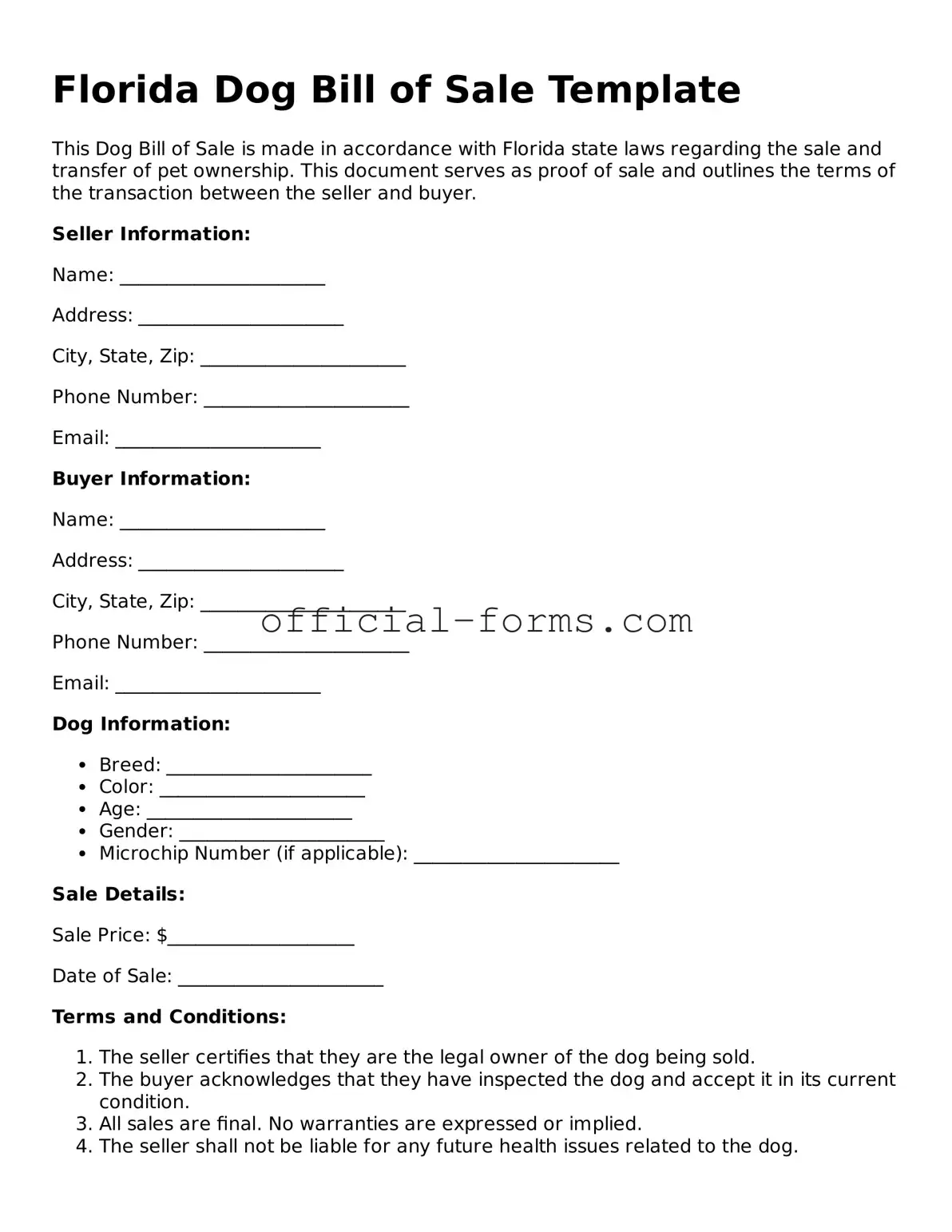When completing the Florida Dog Bill of Sale form, individuals often make several common mistakes that can lead to confusion or legal complications. Understanding these pitfalls can help ensure a smoother transaction when buying or selling a dog.
One frequent error is failing to provide accurate information about the dog. This includes neglecting to specify the breed, age, and any identifying characteristics such as color or markings. Without this information, the bill of sale may lack clarity, making it difficult to confirm the identity of the dog involved in the transaction.
Another mistake involves omitting the seller's and buyer's contact information. It is crucial to include full names, addresses, and phone numbers. Incomplete contact details can hinder communication and complicate future interactions, especially if issues arise after the sale.
People sometimes forget to include the sale price of the dog. This omission can create ambiguity regarding the terms of the sale. Clearly stating the amount paid not only provides transparency but also serves as a record for both parties.
Some individuals neglect to include the date of the transaction. A missing date can lead to disputes about when the sale occurred, which is particularly important for establishing ownership and any applicable warranties or guarantees.
Additionally, failing to sign the form is a common oversight. Both the buyer and the seller must sign the bill of sale to validate the agreement. Without signatures, the document may not hold up in a dispute.
People often overlook the importance of including any warranties or guarantees regarding the dog's health or behavior. If the seller offers any assurances, these should be clearly stated in the bill of sale to protect both parties' interests.
Another mistake is not keeping a copy of the completed bill of sale. Both parties should retain a copy for their records. This document serves as proof of ownership and can be useful in case of future disputes.
Moreover, individuals sometimes fail to verify the seller's or buyer's identity. It is advisable to confirm that the person you are dealing with is who they claim to be. This step helps prevent fraud and ensures a legitimate transaction.
Lastly, some people do not take the time to read the entire form before signing. Understanding every section of the bill of sale is essential. This diligence can prevent misunderstandings and ensure that both parties are fully informed about the terms of the transaction.
